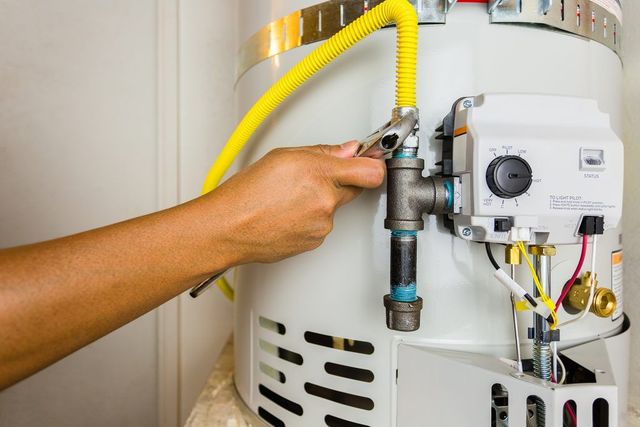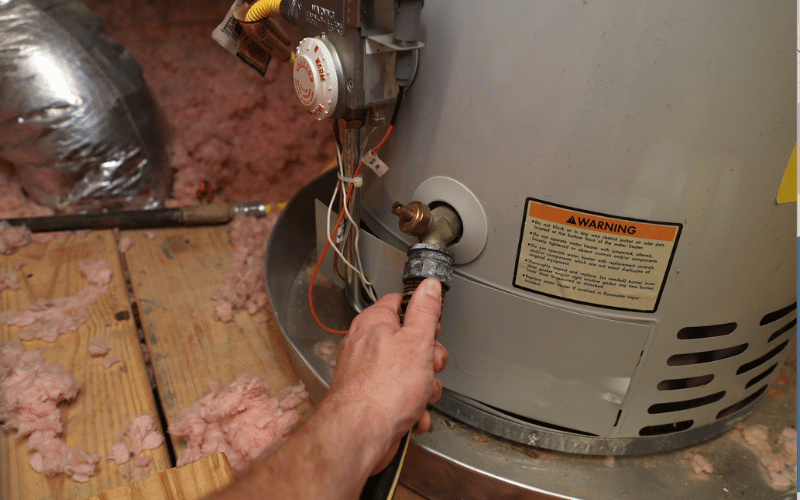Best Practices for Caring for Your Home's Hot Water System
Best Practices for Caring for Your Home's Hot Water System
Blog Article
We've found this post about Water Heater Maintenance Tips You Can't Afford to Forget down the page on the web and accepted it made good sense to relate it with you on this site.

Hot water is important for everyday comfort, whether it's for a refreshing shower or washing recipes. To guarantee your hot water system runs successfully and lasts longer, routine upkeep is vital. This write-up gives functional pointers and insights on just how to preserve your home's hot water system to stay clear of disruptions and expensive fixings.
Intro
Keeping your home's warm water system could seem complicated, yet with a few simple actions, you can guarantee it operates smoothly for years ahead. This guide covers whatever from recognizing your warm water system to DIY upkeep suggestions and recognizing when to call in professional aid.
Relevance of Maintaining Your Warm Water System
Regular maintenance not just extends the life-span of your hot water system yet also guarantees it runs effectively. Neglecting upkeep can lead to lowered efficiency, greater power bills, and also early failing of the system.
Signs Your Hot Water System Demands Maintenance
Knowing when your warm water system needs focus can stop significant issues. Keep an eye out for indications such as irregular water temperature, weird noises from the heating unit, or rusty water.
Comprehending Your Warm Water System
Prior to diving into maintenance tasks, it's helpful to comprehend the standard parts of your hot water system. Typically, this includes the hot water heater itself, pipelines, anode rods, and temperature level controls.
Monthly Upkeep Tasks
Regular monthly checks can help capture minor concerns before they intensify.
Purging the Water Heater
Purging your water heater gets rid of debris build-up, boosting effectiveness and lengthening its life.
Monitoring and Changing Anode Rods
Anode rods stop corrosion inside the storage tank. Checking and changing them when worn out is critical.
Evaluating and Changing Temperature Level Setups
Readjusting the temperature settings makes sure ideal performance and security.
DIY Tips for Maintenance
You can carry out several maintenance tasks on your own to maintain your warm water system in top condition.
Checking for Leaks
Regularly check pipelines and links for leakages, as these can result in water damage and higher expenses.
Evaluating Stress Alleviation Valves
Checking the stress relief valve ensures it operates appropriately and prevents excessive pressure buildup.
Protecting Pipes
Insulating warm water pipelines lowers warm loss and can save power.
When to Call a Specialist
While DIY upkeep is advantageous, some issues call for expert know-how.
Complicated Issues Calling For Expert Assistance
Instances include significant leaks, electrical troubles, or if your water heater is regularly underperforming.
Regular Specialist Upkeep Perks
Professional upkeep can consist of extensive evaluations, tune-ups, and ensuring conformity with safety and security requirements.
Verdict
Regular upkeep of your home's hot water system is crucial for effectiveness, durability, and expense savings. By complying with these ideas and understanding when to look for professional assistance, you can guarantee a dependable supply of warm water without unexpected interruptions.
How to Maintain an Instant Hot Water Heater
Before tinkering with your hot water heater, make sure that it’s not powered on. You also have to turn off the main circuit breaker and shut off the main gas line to prevent accidents. Also turn off the water valves connected to your unit to prevent water from flowing into and out of the appliance. 2. When you’re done, you have to detach the purge valves’ caps. These look like the letter “T†and are situated on either side of the water valves. Doing so will release any pressure that has accumulated inside the valves while at the same time avoid hot water from shooting out and burning your skin. 3. When the purge valves’ caps are removed, you have to connect your hosing lines to the valves. Your unit should have come with three hoses but if it didn’t, you can purchase these things from any hardware or home repair shops. You can also get them from retail stores that sell water heating systems. Read the user’s manual and follow it to complete this task properly. When the hosing lines are connected, open the purge port’s valves. 4. You should never use harsh chemical cleaners or solutions when cleaning your unit. Make use of white vinegar instead. It should be undiluted and you’ll probably use about 2 gallons. 5. Now flush your water heater. This task should probably take about 40 minutes. We can’t give you specific directions for this because the procedure is carried out depending on the type, model and brand of your heater. With that being said, refer to the user’s manual. 6. When you’re done draining the unit, you have to turn off the purge port valves again. Remove the hosing lines that you earlier installed on each of the water valves. Put the valve caps (purge port) back in their respective places and be very careful so as not to damage the rubber discs that are found inside these caps. 7. Now that everything’s back in place, check your user’s manual again to find out how to reactivate your water heating system. 8. Once it is working, turn one of your hot water faucets on just to let air pass through the heater’s water supply pipes. Leave the tap on until water flows smoothly out of it. https://www.orrplumbing.com/blog/2014/september/how-to-maintain-an-instant-hot-water-heater/

I found that blog posting on What Kind of Maintenance Do Water Heaters Need? when doing a lookup on the web. In case you enjoyed reading our blog post kindly do not forget to pass it around. I treasure your readership.
Book Now! Report this page